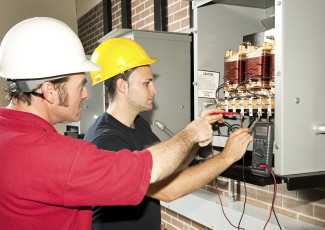Composites Program Provides Recipe for Industry Partnerships
By Sonya Stinson
August 20, 2014
In Washington state, colleges work with industry partners to meet the growing demand for skilled manufacturing professionals.
Community colleges pride themselves on their ability to develop job-training programs to meet changing economic demands. Increasingly, many of these same colleges find they can accomplish more when they work together.
That’s been the case in Washington state, where, in 2013, nine colleges aligned with regional employers to form Composites Washington, a statewide partnership to align manufacturing training across the state with employment needs in the growing composites industry.
The initiative, which AACC’s Community College Daily reported on earlier this year, was originally conceived to meet the demand for skilled composites professionals in the aerospace industry, long a major source of jobs in the region. Specifically, participating colleges were interested in extending the partnerships that evolved from Air Washington, a $20-million U.S. Department of Labor-funded grant that supports aerospace training throughout the state.
“We were at an event, and we just started to talk about how we could continue this collaborative relationship after the grant is over,” explains Ann Avary, director of the Northwest Center of Excellence for Marine Manufacturing & Technology at Skagit Valley College, one of two centers of excellence that coordinates the program with participating community colleges. The other is Aerospace and Advanced Materials Manufacturing at Everett Community College.
In a recent interview, Avary discussed the formation of Composites Washington and offered some takeaways for colleges interested in similar collaborations.
Cross-state collaborations can be tough. What was the key to developing an effective structure for Composites Washington?
This was one of those rare times when everything clicked into place. We knew that we wanted to do professional development for our faculty and industry partners. In terms of building the structure for the group, we first decided on a mission statement. The two centers of excellence led the initiative for the first year, and we’re more or less leading it for the second year. One of the partner colleges stepped up to handle the financial aspect of things. We entered into an interagency agreement, a memorandum of understanding with all of the schools and the participating centers of excellence.
What are some of the key components of this initiative? What makes it work?
One is something that we’re starting right now: We’re going to be developing a common core curriculum for the composites programs. That’s going to be significant, because one of our goals in this consortium is to market the state as an international spot for composites technology education.
Another is the professional development that we’ve been able to bring into the state for the instructors. We’ve realized cost savings and leveraged resources to make that happen. We brought in training with Abaris, which does high-end technology composites training. We also brought in training from the American Composites Manufacturers Association. We put together class cohorts of the instructors, enabling them to go through this training together. Instructors are sharing material and best practices among themselves, which is fantastic.
What advice do you have for community colleges looking to engage in similar partnerships, especially when it comes to serving the needs of local economies?
Regardless of the technical area — whether it’s composites, CAD, welding or whatever — the most important thing for any institutions looking to start or maybe enhance a program is to get industry partners involved at the very outset.
It’s not enough just to get them to the table; colleges need to take into account what employers need and build capacity to develop a curriculum that is responsive to those needs. That usually means money — finding the funding streams to help support the development of that curriculum.
Community partnerships are also important. By this, I mean community organizations, youth organizations, local manufacturing councils and economic and workforce development groups. These folks can sometimes help you find funding or support to develop curricula or get equipment.
But No. 1 is industry. Hands down, employers are the most important people at the table.
For more about Composites Washington, including a list of participating colleges, don’t miss the full story on AACC’s Community College Daily.











